Earth Above the Back of the Giant Turtles, The Story of Awatara Dates
Have you heard the legend of Earth on the back of a giant tortoise? This story may only be heard in animated films that seem unlikely. But the historical fact of the classical priode has proved it derived from the relief texts that mountains and floating islands have occurred. Some people believe that the Earth is on the back of a giant tortoise, mythology is also written in America, India, China, and Japan.
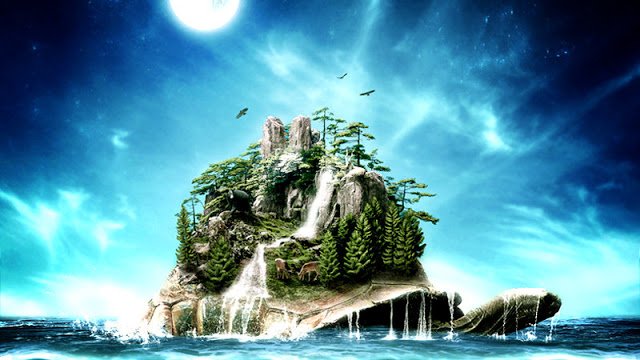
Turtles are a symbol of wisdom and knowledge, and able to defend themselves. It symbolizes water, moon, earth, time, eternity, and fertility. Creation is associated with tortoises and many beliefs that turtles support the burden of the whole world. Turtles as a symbol of steadfastness and tranquility in religion, mythology, and folklore from around the world. In the cosmological myth of some World cultures, tortoises carry the earth on their backs or support the heavens.
Hindu Mythology, Earth Above the Back of the Giant Turtles
The beginning of the story is written in Hindu literature, from Stirring of the Ocean of Bima where the gods and demons churned in the Bima Ocean to fight over the Nectar of immortality (Tirta Amerta, the holy water that can make life immortal). Vishnu, the keeper of the cosmic order has transformed into a giant tortoise called Awatara / Avatar Kurma in the middle of the Bima Ocean. Above this giant tortoise shell is Mount Mandara or Mount Meru, used as a rotating stick to stir, while Vasuki's snake forms a rope.
In India, Hindu literature tells the Earth story on the back of a giant tortoise occurring at the time of Satyayuga, the Gods and asuras assembled on the top of Mahameru mountain to get the amta throne. Vishnu said: "If you want tirta amerta, stir the ocean, then do it!". Then a mountain was uprooted by the Anantabhoga and all its contents, after obtaining permission from the God of the Ocean, Mandara mounts were dropped in the sea of Ksira and used as ocean stirrer sticks.
This legend began when the gods approached Vishnu to memnita help, Vishnu then asked them to stir the ocean of milk after adding drugs to the sea. Mount Mandara (Meru) is used as a rotating stick, Asura helps to lift the mountain in Nectar exchange of immortality resulting from agitation of the universe. The gods and Asuras churned using Vasuki's snake (Basuki) as a strap. At first, the king of the gods (Indra) asked Asura to be at the head of Vasuki's head. But Asura suspects him for using Vasuki's poison which slowly weakens them. Dewa Indra called the clouds and overhung the asuras and rakshasa, the fat of all animals in the mount Mandara with wood forest oil to make the sea thickens, stirring Mount Mandara getting great.
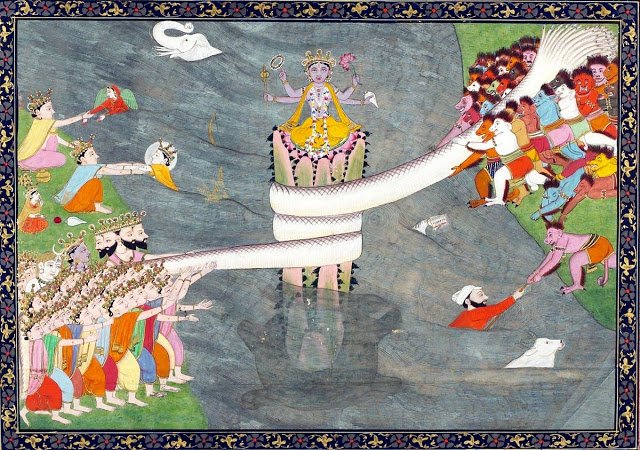
The stirring caused the mountain to sink and then the god Vishnu changed the shape to Avatar Kurma floating mount dipundaknya. The nectar of eternity came out, Asura grabbed it. Then Lord Vishnu takes the form of an angel, a beautiful girl named Mohini, and seduces the Asuras so as not to let him take the water of immortality. The asuras knew and the monster became angry, there was a war between the Gods with Asura and the monster. The battle took so long, then Lord Vishnu took out a chakra gun capable of grabbing the asuras and the rakshasa. So finally the tirta amerta is on the side of the Gods.
As the stirring of the ocean, Halahala's deadly poison began to spread, a poison that can kill all living things. Lord Shiva drank the poison so that his neck became blue (Nilakantha), after which came the gods, hewn and plants, and other objects such as Sura (Goddess who created wine), Apsara (heavenly fairy), Kostuba (the most precious gem ), Uccaihsrawa (the horse of the Gods), Kalpawreksa (the tree that grants wishes), Kamadhenu (mother of all cows), Airawata (vehicle of Indra God), and Lakshmi (goddess of fortune and prosperity). And last came Dhanwantari carrying a jar containing Tirta Amerta (Nectar of Eternity).
Mesoamerican mythology About Giant Turtles
This legend has also been known to the Mesoamerican civilization, one of which is in the Museum of Anthropology of Mexico City. The turtle carving that carries the pillar on its back is very similar to the depiction of Vishnu incarnate as a turtle of Mount Meru. The Mesoamerican people greatly respected the turtles, as in Asia, where turtles were sacred animals and even worshiped in temples.
The Maya tribe has the concept of a two-headed turtle god whose image can be found on carvings on several altars of the Late Classic. The two-headed Turtles are considered Gods that emerged at the beginning of creation. This two-headed turtle shell is described as corn which is the source of fertility and abundance, is also the center of the Tree World, this symbol is equivalent to Mount Meru.
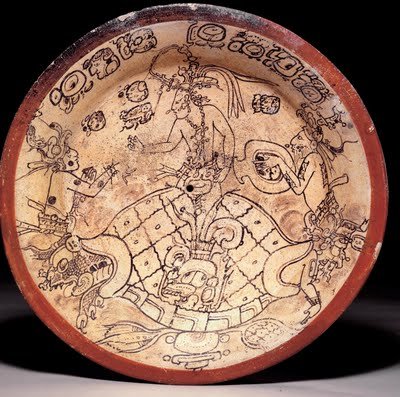
An independent work of Carl de Borhegyi has been published entitled Soma in America, the Mesoamerican manuscript story is very similar to the stirring of Samudera Bima. The relief of the El Tajin archaeological site, in Veracruz Mexico, describes the tortoise as a center-backed central axis. The rotating mechanism also uses the coiled snakes on both ends by a pair of sky gods. This proves that Mesoamerican culture uses the symbolism of a giant tortoise that is very similar to Asia, even its mythological story is the same.
In the Classical period of the Maya, the city of Uxmal in Mexico, inscriptions such as the bixi turtle look very much carrying the memorial tablets on its back, just like those found in China and other Asian countries. When viewed closely, an outline of the eyes and mouth of the tortoise appears. Giant tortoises are at the bottom called the Quadrangle Nunnery, very much in keeping with the Bixi tortoises near the entrance to the building and the tomb.
Turtles In Mythology China, Mongolia, Vietnam, Japan, And Korea
Another thing in China, the symbolism of the giant tortoise is seen in the burial architecture. The engraved stone tortoise called Bixi serves as a basis for holding a memorial tablet that praises the good of the deceased. Bixi turtles are generally placed as ornaments of the tomb of the Chinese emperor, also installed at the entrance to the palace, temples, and city walls.
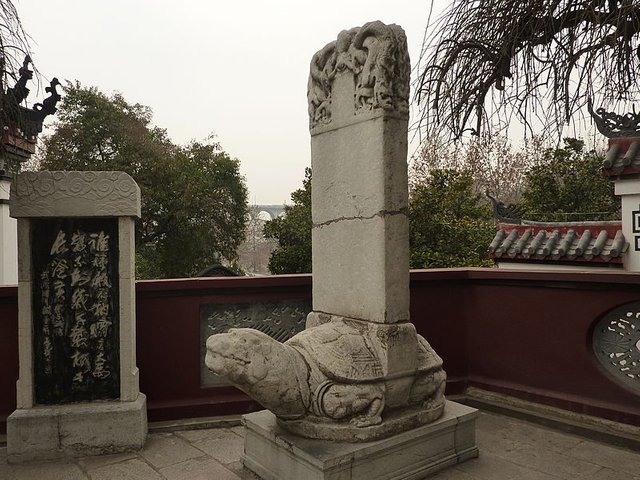
Turtle inscriptions can be found in several other Asian countries influenced by China such as Mongolia, Japan, Vietnam and Korea. From a visual perspective, the Bixi tortoises carrying memorial tablets resemble the Wisnu awatara form as the cosmic turtle of Mount Meru's backs on its back.
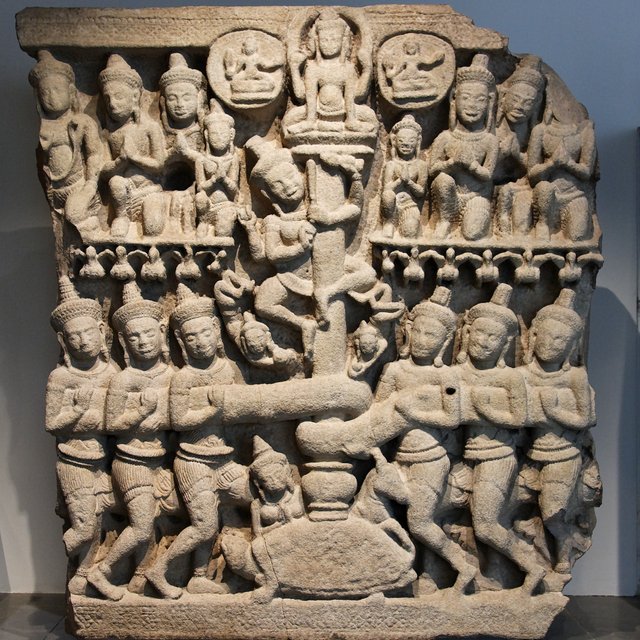
Penglai Mountain or also known as Penghu, a legendary territory in Chinese mythology where one of the three mountains (the divine island) located in the East Sea together with Fangzhang and Yingzhou. This region is regarded as the abode of eternal human beings, Penglai and Kunlun is the most famous Taoist Paradise. Chinese mythology says, Eight Immortals live in the three islands above the giant turtle's back so that it can move places. Initially the number of islands there are five, but the giant has brought a tortoise carrying two islands that eventually drowned.
Japanese culture adopted the Chinese myth, the turtles protect the Heian city (Kyoto) from the threats arising from each of the four directions of the wind. The black turtle or Gen-bu, sometimes described as a combination of turtles and snakes, protects Kyoto from the north. Other animals are the Azure Dragon (Sei-ryu, in the east), Vermilion birds (Su-Zaku, in the south), and the White Tiger (Byak-ko, in the west). Minogame legend is also known to have seaweed growing on his back, a symbol of longevity and happiness, juag plays an important role in the famous legend Urashima Taro. According to traditional Japanese beliefs, the tortoise is an eternal paradise and a mountain of the world, and symbolizes longevity, fortune, and support.
In Sufism's belief, the hatching and return of a turtle's baby to the sea is a symbol to return to God through God's guidance. The journey of a turtle's baby is a good parable for Qur'anic verses 87: 1-3.
The symbolism of water and turtles in the art and architecture of civilization on both distant continents have in common. The stirring imagery of Samudra Bima, the mythological story of Hindu origin is also seen in Mesoamerican manuscripts. That is, it has long been a cultural contact between civilizations on both sides of the Pacific.
Reference
India through the ages, by Gopal, Madan (1990). K.S. Gautam, ed.
Chinese Mythology A to Z. By Jeremy Roberts (2010). New York: Chelsea House Publishers.
Classical Japanese Prose. By McCullough, Helen, Stanford Univ. Press, 1990.
Dates Avatar of Vishnu, below Mount Mandara, with Vasuki. A Ming-era bixi turtle with a blank stele near the temple of Yu the Great, part of the "Qingchuan Pavilion" complex in Wuhan. Prasat Phnom Da, style d'Angkor Vat, image courtesy of Wikimedia Commons.
https://steemit.com/iammuslim/@alzalza/i-m-muslim-don-t-panic